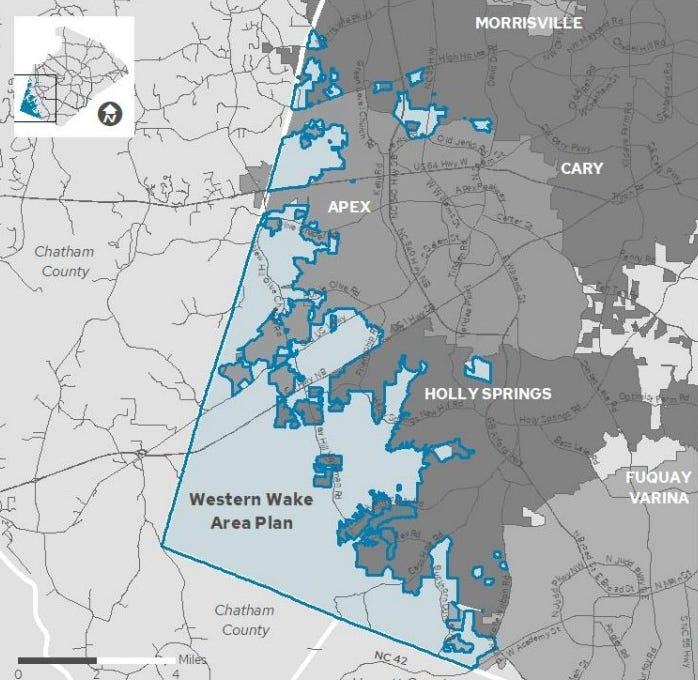Wake County Commissioners Discuss Plan for Western Wake Area, Including Holly Springs
The emphasis on protecting farmland, creating trails, and avoiding dense housing developments mirrors Holly Springs’ efforts to balance its small-town charm with thoughtful expansion.
Holly Springs, NC, Jan.9, 2024—At the January 7, 2024, meeting, Wake County Commissioners discussed updates to the Western Wake Area Plan. This plan focuses on managing growth and preserving the area's environment, including Holly Springs, Apex, and other nearby communities. It is part of the larger Plan Wake framework and aims to balance new development with protecting farmland, green spaces, and community character.
“This is a living document… fluid and dynamic,” one speaker explained, highlighting the plan’s flexibility to adapt as the area grows.
What’s Changing in the Plan?
Several updates were proposed to manage growth better and ensure community input is reflected. Here are the main changes:
Lower Housing Density
The plan reduces the number of houses allowed in some areas like Friendship and New Hill. Residents in these neighborhoods want to avoid high-density development and preserve the area’s rural feel. Officials emphasized, “What they don’t want to see is someone coming in and rezoning that land... to make it higher density.”
Protecting Key Lands
New rules will designate areas around Harris Lake and the Shearon Harris Nuclear Plant as conservation zones, protecting them from heavy development. The plan also formally recognizes farmland as an essential resource, giving it its own category in the county’s land-use plan.
Planning for Greenways
The plan proposes expanding greenway trails, making it easier for people to walk and bike between neighborhoods and parks. These trails could connect to Holly Springs’ existing greenways, aligning with local efforts to improve walkability and recreation.
Limited Commercial Growth
While some residents are okay driving into town for shopping, the plan includes reviewing whether additional stores or commercial centers are needed. The community prefers to keep new commercial development small and strategically located.
How This Affects Holly Springs
Holly Springs has been growing quickly, with the population nearly doubling between 2010 and 2020. By 2030, the town’s population is expected to hit over 64,000. Local leaders have worked to sustain that growth, and this plan supports those goals.
“One of the biggest things we’re attempting to tackle… is ensuring that growth is happening in a way that maintains resources, public health, safety, and the environment,” officials said during the meeting.
The emphasis on protecting farmland, creating trails, and avoiding dense housing developments mirrors Holly Springs’ efforts to balance its small-town charm with thoughtful expansion.
Community Feedback Played a Big Role
Planners spent the past year gathering input through surveys, meetings, and online tools. Residents overwhelmingly supported keeping the area’s rural and low-density character intact. Based on their feedback, planners adjusted the plan to reflect better community priorities, such as lowering housing density and protecting agricultural land.
What’s Next?
The Western Wake Area Plan is expected to be voted on by the Commissioners in the coming weeks. If approved, it will guide the region's growth and development, ensuring communities like Holly Springs grow while preserving their character and quality of life.
“This is not a static document,” planners reminded attendees, emphasizing that the plan can adapt as new challenges and opportunities arise.

